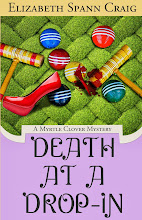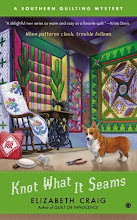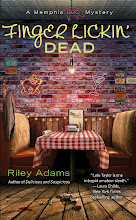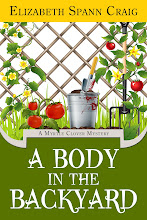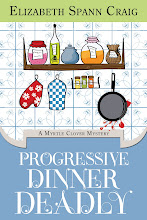
Thanks to guest blogger Margot Kinberg for posting for me today! Margot is the author of Publish or Perish and an associate professor at National University in Carlsbad, CA.
It never seems to fail. I’ll be settling down for a few hours of undisturbed writing when the phone rings. Or the dogs need attention. Or the  laundry needs to be moved along. On other days, I’ll be inspired by an idea, but it happens while I’m in an important meeting at work. Or in a long line at the bank. Or sitting in traffic on the way home from work. The problem sometimes with being a writer is that real life keeps getting in the way.
laundry needs to be moved along. On other days, I’ll be inspired by an idea, but it happens while I’m in an important meeting at work. Or in a long line at the bank. Or sitting in traffic on the way home from work. The problem sometimes with being a writer is that real life keeps getting in the way.
But that’s just it. Good writing is real life. The best characters are real characters who behave in believable ways. The best plots come from real-life situations that we all face. The most memorable stories are stories about people who could be us. So instead of resenting the real life that seems determined to intrude on my make-believe world of writing, I’ve learned to embrace it. I’ve learned that with a few tricks, I’m able to harness the real-life situations that I face and use them in my writing. Not only does it help to improve my writing, but I also get to feel very smug and productive even when I’m not actually at the computer ; ).
Here are the tricks that work for me:
Savor those distractions!
Sometimes it can seem as though distractions are only irritating wasters of time. But they are also the stuff of real life. Those distractions can actually help me to connect with my characters in ways I probably wouldn’t be able to do if my life ran more smoothly. Characters in my novels have to drive through bad weather, fix flat tires, pay bills, walk their dogs, deal with work issues and a thousand other things. When I experience those things, too, I’m able to empathize with those characters and write about them in ways that help readers empathize with them, too.
Distractions also help me stay connected to other people, and that’s important, too. When I’m standing in line at the dry cleaner, for instance, I connect with the other people there and with the person behind the counter and that reminds me of what real people do in those situations. That makes it much easier to write real-life scenes. For instance, there’s a grocery store scene in my book B-Very Flat. That scene’s the product of a thousand trips to my own grocery store on the way to or from work. I can empathize with the characters in that scene because I’ve been there and done that.
I admit it’s not always easy to step back and appreciate a distraction for the opportunity it is. I get as irritated as anyone when the day doesn’t work out the way I’d planned. But I’ve learned that it’s just those distractions that have taught me the most about real characters and therefore, well-written characters.
Remember what it’s like.
This one takes a little preparation, but I’ve found it to be really useful. When I’ve been pulled away from my beloved computer, instead of seeing it as “wasted time,” I try to remember how it feels to pull warm, soft clothes out of the dryer, or successfully complete a work project I’m proud of, take a long plane ride or attend a convention. All of those emotions are also the stuff of real life, and remembering them helps me to empathize with my characters when they have similar experiences. If I can empathize with them – walk in their shoes – I can make them more real, so readers can empathize with them, too.
Of course, emotions are fleeting things. That’s where the preparation part comes in. I’ve found that it helps to keep a little pad of paper and a pen handy, so I can make notes that I use to jog my memory. I know other writers use audio recorders for a similar purpose, and I’m sure that they work well, too. In some way, it’s important to try to capture the feelings one has, because that helps in giving characters believable reactions to life.
Use it!
Most writers hit “dry spells,” where the dialogue seems forced, the characters “flat” or the action unrealistic. I know I do. There are books, workshops, even courses designed to help writers create interesting and realistic stories. Those can be very useful. But the reality is, most of us don’t hit “dry spells” at convenient moments, such as just in time to register for an interesting workshop. We hit them at very awkward moments, such as a week before an important deadline.
That’s where those annoying, but very useful distractions can come in very handy. Using those experiences to “breathe life” into a character, a conversation or an event can do a lot to make writing more “real” and engaging. Using experiences we’ve had ourselves, like waiting at a dentist’s office, answering phone calls and buying a birthday present for someone can make characters more “real” – more “well-rounded.” And after all, those “round” characters are the ones that are most appealing. Readers empathize with them because they have walked in the same shoes.
I’ve found that if I look back on the situations and experiences that pull me away from writing, and remember what they are and what they feel like, I’m able to use them to draw me back to my writing. In other words, if I use my own experiences to “walk a mile” in a character’s “shoes,” I can make that character or situation more “real” – more “round.”
What do other people advise?
Author Ken Brosky has some useful ideas about using your own experiences to make characters more real.
http://writingfiction.suite101.com/article.cfm/real_life_writing_prompts
Here is author Simon Wright’s article on using personal experiences as the basis for writing: http://www.helium.com/items/1417668-using-personal-experiences-and-emotions-to-write-a-novel-or-short-story
CompletelyNovel.com is also a very valuable resource for writers. It’s got a lot useful links and article for writers, including this one on using your own experiences.
http://writingfiction.suite101.com/article.cfm/real_life_writing_prompts
Kelly Stone has also edited a fascinating book, Time to Write on integrating personal experiences and writing so as to work writing into a busy life. There’s an overview and preview of the book at http://books.google.com/books?id=lBkuU7H16r8C&printsec=frontcover#v=onepage&q=&f=false
What do you do when life seems to get in the way of your writing?  How do you make those myriad distractions work for you?
How do you make those myriad distractions work for you?
Margot Kinberg Confessions of a Mystery Novelist @mkinberg (Twitter)





